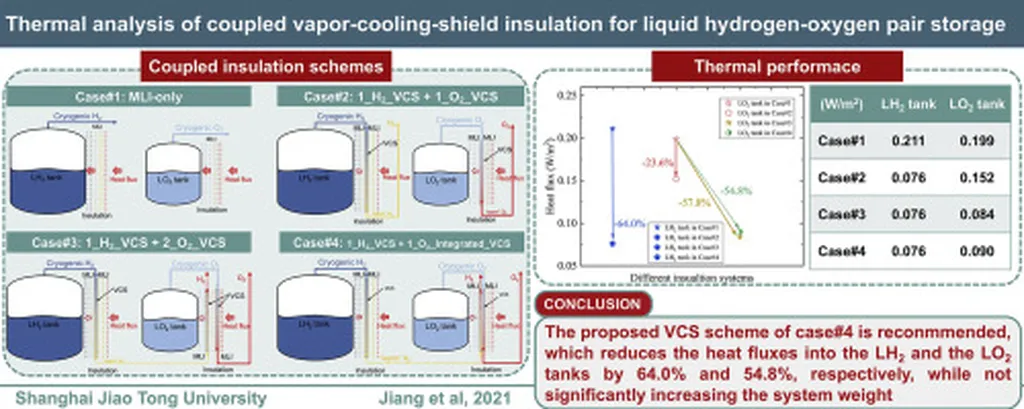In the quest to optimize liquid hydrogen storage, a recent study published in *Zhileng xuebao* (translated to *Journal of Refrigeration*) has shed light on the intricate balance between structural design and thermal insulation performance. Led by Yang Haoze, the research delves into the complexities of vapor-cooled shields (VCS) and multilayer insulation (MLI) in liquid hydrogen storage tanks, offering insights that could revolutionize the energy sector.
Liquid hydrogen, a promising clean energy source, poses significant storage challenges due to its extremely low boiling point of -253°C. Effective insulation is crucial to prevent boil-off, where the hydrogen vaporizes and is lost. Yang Haoze and his team tackled this issue by establishing a three-dimensional steady-state model to analyze temperature distribution and thermal insulation performance in VCS structures.
The study compared two VCS arrangements: parallel and spiral. For the parallel arrangement, increasing the tube diameter, number of tubes, and mass flow rate improved insulation performance. Similarly, the spiral arrangement benefited from increased tube diameter and flow rate. However, the effect of tube length on insulation performance in the spiral arrangement was found to depend on the vapor mass flow rate. Interestingly, the radiation shield thickness had a minor impact on insulation performance.
“Our findings indicate that the relative superiority of the two VCS pipe configurations in terms of insulation performance is influenced by the venting vapor mass flow rate,” said Yang Haoze. This suggests that the choice between parallel and spiral arrangements should be tailored to specific engineering applications, considering the venting method and capacity.
The implications for the energy sector are substantial. As the world shifts towards cleaner energy sources, efficient liquid hydrogen storage is becoming increasingly important. This research provides valuable guidance for designing and optimizing liquid hydrogen storage tanks, potentially reducing energy losses and improving the viability of hydrogen as a fuel source.
Moreover, the study’s focus on three-dimensional modeling and systematic analysis sets a new standard for research in this field. By offering a comprehensive understanding of the factors affecting thermal insulation performance, it paves the way for future innovations in liquid hydrogen storage technology.
As the energy sector continues to evolve, research like Yang Haoze’s will be instrumental in shaping the future of clean energy. By providing accurate design guidance and optimizing thermal insulation performance, this study brings us one step closer to a sustainable energy future.

